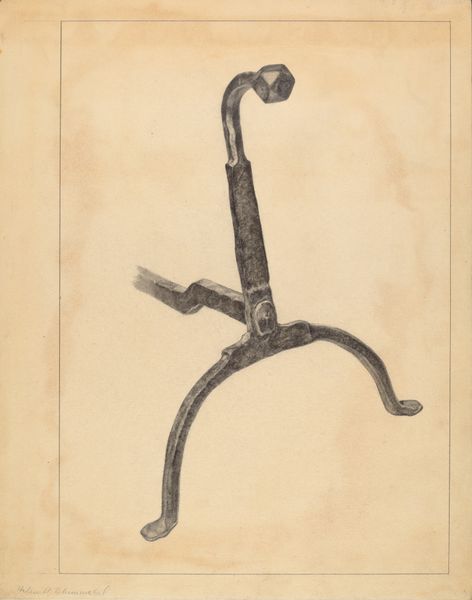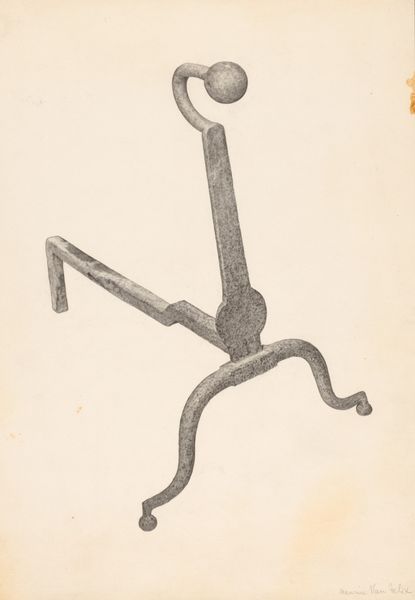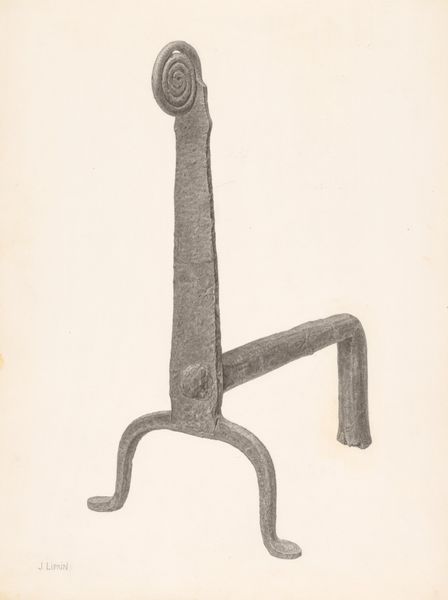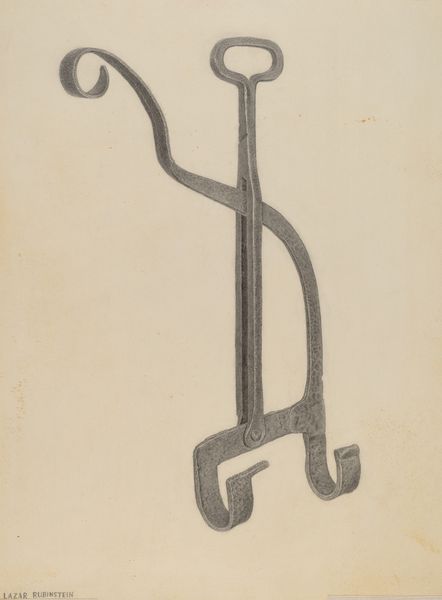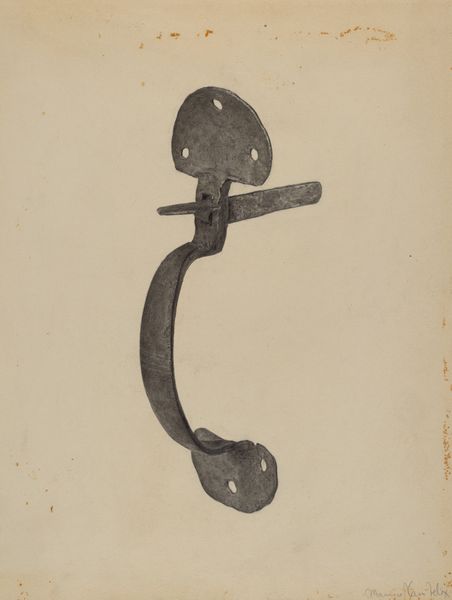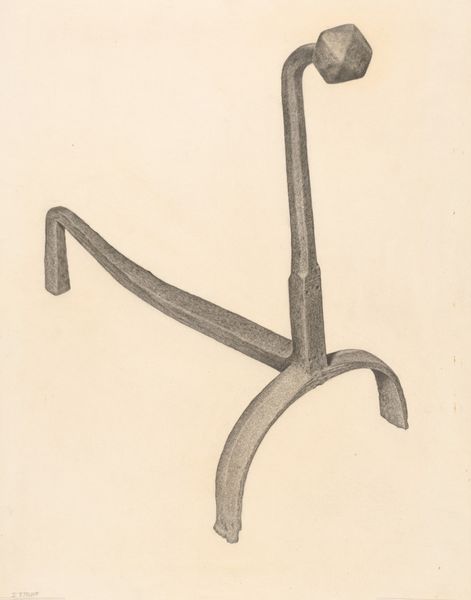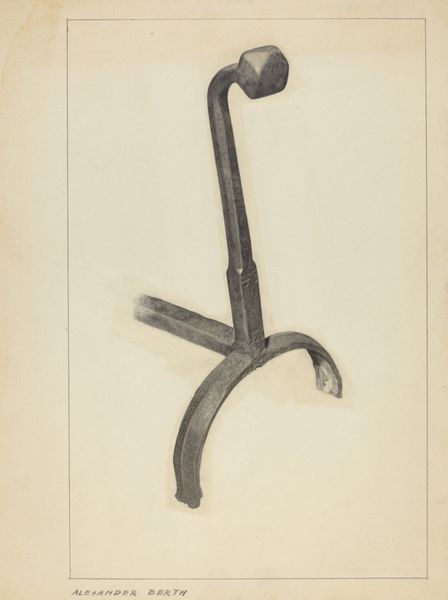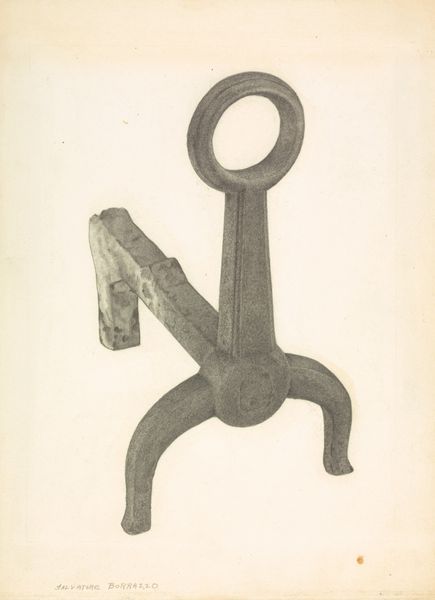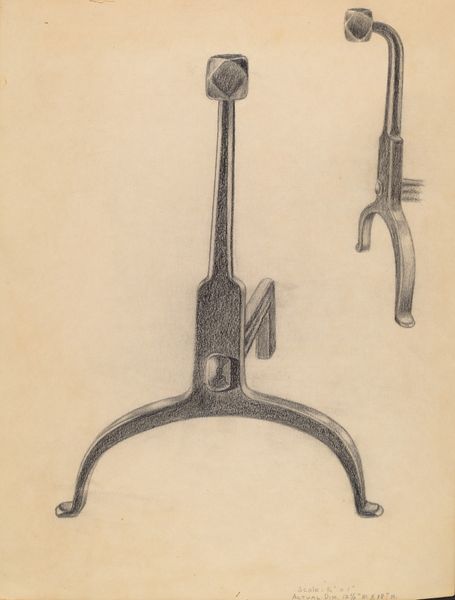
drawing, pencil
#
drawing
#
pencil
#
line
#
realism
Dimensions: overall: 29 x 22.4 cm (11 7/16 x 8 13/16 in.) Original IAD Object: 17 1/2" high; 11 3/4" wide
Copyright: National Gallery of Art: CC0 1.0
Curator: This somber pencil drawing immediately brings to mind notions of weight and stasis. There's a grounded feeling established by the density of the shading. Editor: Indeed. Let’s take a look at Salvatore Borrazzo's “Andiron," created between 1935 and 1942. We see an object designed for practical utility rendered with considerable attention. The object, nearly centered on the page, embodies a realism heightened by its graphic qualities. Curator: Absolutely, note how Borrazzo meticulously captures the andiron's form. The careful, dark hatching across its surfaces gives it a robust, almost palpable quality. It is tempting to read the object as representing ideas related to solidity, stability and hearth as family focal points, and more figuratively as central concepts for community building. Editor: I see an artisan’s labor mirrored. The drawing style values the skilled work to shape iron. The focus is less on abstract ideals and more on revealing the honest methods, materials, and the physical effort in its construction. This isn't just about the hearth, it’s about celebrating industrial processes. Curator: A compelling interpretation. The curvature and verticality of the forms, however, do create a satisfying composition. Even within this modest domestic object, one discerns artistic consideration of form, line, and value. There is a kind of purity achieved. Editor: True, and the way it captures texture seems less a quest for some artistic essence than it documents material history. It invites consideration about where the material originates, who worked the iron, who might have placed this piece inside their house to warm a dwelling? It brings questions of craft and labor. Curator: Well, whatever perspective you adopt, one cannot deny Borrazzo's masterful skill at evoking the substantiality of iron. This image is undeniably compelling. Editor: I would agree that in choosing a commonplace object to document, Borrazzo highlights art's potential to reveal histories of materiality and process hidden within everyday items.
Comments
No comments
Be the first to comment and join the conversation on the ultimate creative platform.
